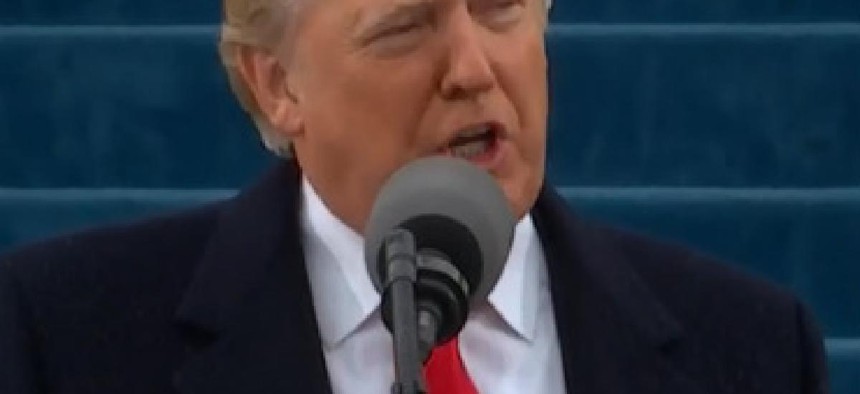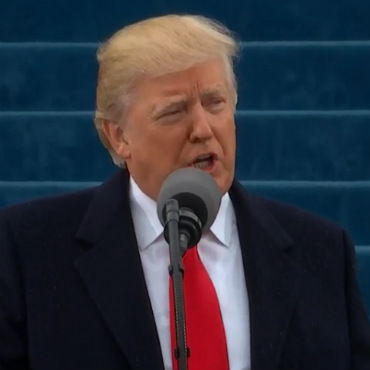Trump signs federal hiring freeze

As promised during the campaign, President Trump has signed an executive order implementing a hiring freeze across most of the civilian federal workforce.

In one of his first executive actions, President Donald Trump put a freeze on federal hiring and pay raises for federal employees.
Trump signed an executive memorandum in the Oval Office on Jan. 23 at an event that included Vice President Mike Pence, White House Chief of Staff Reince Priebus and other top advisers to the new president.
In October 2016, the Trump campaign promised a freeze that would apply to civil service hiring at agencies with exceptions for the military, public safety and public health workers. The executive order sets up a 90-day review by the Office of Management and Budget, culminating in a "long-term plan to reduce the size of the federal government's workforce through attrition." The order will expire once that plan goes into effect.
Active-duty military personnel are specifically exempted under the order, which also allows the head of any department to make exceptions on the grounds of national security and/or public safety.
The freeze will not get in the way of plans to onboard political appointees – non-career Senior Executive Service posts and hires under Schedule C are exempted. The order also does not apply retroactively, and exceptions can be made to the freeze at the behest of the director of the Office of Personnel Management.
"I think what the president is showing through the hiring freeze first and foremost today is that we've to respect the American taxpayer," Press Secretary Sean Spicer said at a Jan. 23 White House briefing. "To see money get wasted in Washington on a job that is duplicative is insulting to the hard work that they do to pay their taxes."
Spicer added that agency landing teams were looking to find greater efficiencies and reduce duplication in the federal workforce.
The leader of the American Federation of Government Employees union slammed the move.
"This hiring freeze will mean longer lines at Social Security offices, fewer workplace safety inspections, less oversight of environmental polluters, and greater risk to our nation’s food supply and clean water systems," AFGE National President J. David Cox Sr. said in a statement.
Cox also complained that the move will drive agencies to hire more contractors to fill the gaps caused by the absence of agency workers. "President Trump’s federal hiring freeze will result in more government waste as agencies are forced to hire high-priced contractors to do the work that federal employees can and should be doing," he said.
Another union leader, Tony Reardon, national president of the National Treasury Employees Union, called the hiring freeze is "harmful and counterproductive." He added that, "our government depends upon highly-trained and experienced federal workers being able to carry on with their important work. This puts up a substantial roadblock for agencies."
Max Stier, CEO of the Partnership for Public Service, said, "Hiring freezes are the wrong way to achieve a laudable goal of making our government more effective for the American public. We believe the smarter course of action would be to reimagine and rebuild the systems and processes that make government work."
Rep. Gerry Connolly (D-Va.), whose district is home to many federal employees and contractors, complained that a hiring freeze "is a rather mindless approach to management," adding that it "discounts the criticality of particular missions."
And David Eagles, director of the Center for Presidential Transition at the Partnership for Public Service, told FCW that the Trump administration will be able to forge solid working relationships with career government employees at the policy-execution level despite the hiring freeze. The ability of the Trump administration to execute its policy will depend on whether the political team "will close the door on the career workforce or whether there is an aggressive plan to engage and align" the work of political appointees with the work of career federal employees.
NEXT STORY: Connolly warns on workforce changes



